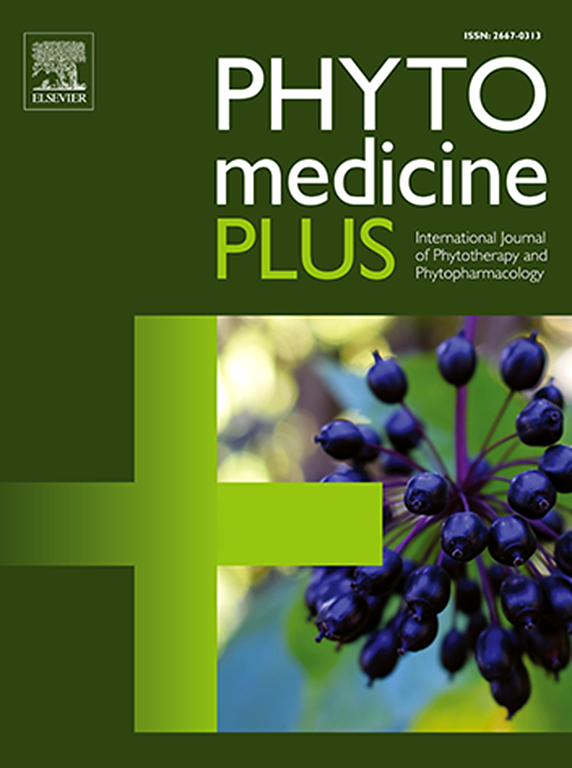Comprehensive regulation of Danggui-Shaoyao-San and its active constituent PGG on puromycin aminonucleoside induced nephrotic syndrome in rats
Q3 Pharmacology, Toxicology and Pharmaceutics
引用次数: 0
Abstract
Background: Danggui-Shaoyao-San (DSS) is a classic Chinese compound prescription that has been proven to be effective in treating nephrotic syndrome (NS) in both clinical trials and animal experiments. This study aimed to reveal the mechanism of action of DSS and one of its main constituents, 1,2,3,4,6-O-pentagalloylglucose (PGG), in protecting the kidney through multiple pathways. Methods: In vivo, we used TUNEL assay, western blotting, real-time quantitative PCR, and immunofluorescence to further confirm the regulatory effects of these interventions on apoptosis, podocyte structure and oedema-related proteins in renal tissue. Results: The results of animal experiments showed that DSS effectively alleviated NS. In different combinations, the blood-associated herbs group and PGG decreased the plasminogen related indicators. Molecular mechanism studies revealed that DSS improved the fusion of podocyte foot processes and inhibited renal cell apoptosis. Furthermore, DSS and PGG were confirmed to have improving effects on sodium transporter related proteins and aquaporin 2. Conclusions: These results demonstrate that DSS can alleviate NS by inhibiting apoptosis, ameliorating podocyte injury and possibly reducing sodium and water retention via plasminogen and that its active constituent PGG has a special effect on plasminogen-epithelial Na+ channel, which provides a potential candidate for the treatment of NS.
当归少药散及其有效成分PGG对嘌呤霉素氨基核苷所致大鼠肾病综合征的综合调节作用
背景:当归少药散(DSS)是一种治疗肾病综合征(NS)的经典中药复方,在临床和动物实验中均有较好的疗效。本研究旨在揭示DSS及其主要成分之一PGG (1,2,3,4,6- o -pentagalloylglucose, PGG)通过多种途径保护肾脏的作用机制。方法:在体内采用TUNEL法、western blotting法、实时荧光定量PCR法、免疫荧光法进一步证实这些干预措施对肾组织细胞凋亡、足细胞结构和水肿相关蛋白的调节作用。结果:动物实验结果显示,DSS能有效缓解NS。在不同的组合下,血相关中药组和PGG降低了纤溶酶原相关指标。分子机制研究表明,DSS促进足细胞足突融合,抑制肾细胞凋亡。此外,DSS和PGG对钠转运蛋白相关蛋白和水通道蛋白2有改善作用。结论:DSS可通过纤溶酶原抑制细胞凋亡,改善足细胞损伤,可能减少钠潴留和水潴留,其活性成分PGG对纤溶酶原-上皮Na+通道有特殊作用,为NS的治疗提供了潜在的候选药物。
本文章由计算机程序翻译,如有差异,请以英文原文为准。
求助全文
约1分钟内获得全文
求助全文
来源期刊

Phytomedicine Plus
Medicine-Complementary and Alternative Medicine
CiteScore
3.70
自引率
0.00%
发文量
178
审稿时长
81 days
期刊介绍:
 求助内容:
求助内容: 应助结果提醒方式:
应助结果提醒方式:


